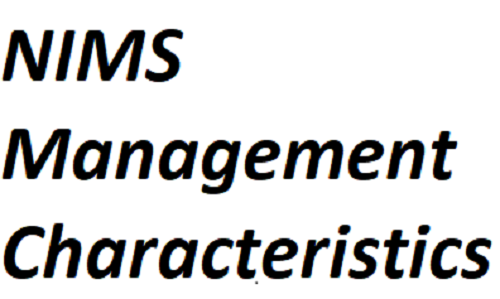Have you ever found yourself in a situation where multiple tasks are being delegated, but no one seems to know who’s responsible for what? It can be frustrating and confusing, especially when time is of the essence. This is where NIMS management characteristics come into play. In this blog post, we will discuss one particular characteristic that helps eliminate confusion caused by multiple task assignments. So grab your pen and paper because you won’t want to miss out on this valuable information!
Purpose
NIMS management characteristic helps to eliminate confusion caused by multiple. By implementing a single NIMS management system, organizations can improve communication and coordination among employees. This can reduce the confusion caused by multiple systems and help ensure that employees are aware of critical information. Additionally, a single system can help to standardize training and Disaster Preparedness procedures across an organization.
What is NIMS?
NIMS is a system that provides a framework for sharing information and managing resources among agencies and organizations. It helps to ensure the effective communication of mission-critical incident and threat information. NIMS was developed in the late 1990s as part of the National Response Framework (NRF), which is designed to help coordinate national responses to terrorist threats and incidents.
NIMS uses five management characteristics to help simplify the flow of information: it is modular, it is standardized, it is comprehensive, it is dynamic, and it is interoperable. These characteristics allow for easy customization and integration into preexisting systems. Additionally, NIMS uses terminology that is common across government organizations. This makes it easier for responders to understand each other’s messages.
NIMS allows for the sharing of information between different levels of government and across different organizational boundaries. This helps to ensure that all necessary information is available when needed. In addition, NIMS can be used to manage both routine and emergency activities. This makes it an ideal tool for responding to terrorist threats and incidents.
Types of Management Characteristics
There are a variety of different management characteristics that can help to eliminate confusion caused by multiple systems. Some of these include standardization, measurement and control, communication, delegation, and integration.
Standardization: One of the best ways to eliminate confusion is to standardize all aspects of the organization’s operations. This will help ensure that all employees are using the same terminology and procedures, which will make it easier for them to communicate with one another.
Measurement and Control: Another important management characteristic is measurement and control. By monitoring how everything is performing, managers can identify problems and make necessary adjustments. This helps to prevent confusion and optimize operational efficiency.
Communication: Good communication is essential for eliminating confusion in an organization. When everyone knows what’s going on and understands the purpose of each system, they’re able to work more effectively together.
Delegation: Delegating tasks and responsibilities allows employees to focus on their specific areas of expertise while still helping to manage the overall organization effectively. This helps to minimize overlap in responsibility between departments, which can lead to confusion.
Integration: Integration refers to bringing together various systems into a cohesive whole. By doing this, managers can create a single source of information from which they can make decisions accordingly. This will help avoid confusion and ensure that all operations remain consistent
How to Choose a Management Characteristic
NIMS management characteristic helps to eliminate confusion caused by multiple systems. This characteristic can help reduce the number of administrative tasks that an organization must complete. Additionally, this characteristic can help employees understand their roles and responsibilities within the organization.
When choosing a NIMS management characteristic, it is important to consider the needs of your employees. Some characteristics may be more beneficial to certain groups of employees while others may be more beneficial to all employees. It is also important to consider the type of organization you operate in order to determine which management characteristic will best suit your needs.
Some examples of NIMS management characteristics include:
- Well-defined standards and processes for reporting incidents
- Clear communication among employees regarding their roles and responsibilities
- Elimination of confusion caused by multiple systems
Benefits of Choosing a Management Characteristic
Using a management characteristic to eliminate confusion can have many benefits. First, it can help to reduce the amount of time spent on administrative tasks. Second, it can help to improve clarity and communication within an organization. Finally, it can lead to more accurate and efficient decision-making.
Conclusion
NIMS management characteristics can help to eliminate confusion caused by multiple authors and jurisdictions. NIMS management characteristic provides information necessary for the unified command and control of emergency response efforts. It supports a common understanding of events, facilitates the integration of various responses, and enhances communication among responders. Additionally, NIMS management characteristic helps to mitigate human error in emergency response activities by providing consistent application of guidelines across all responders.


